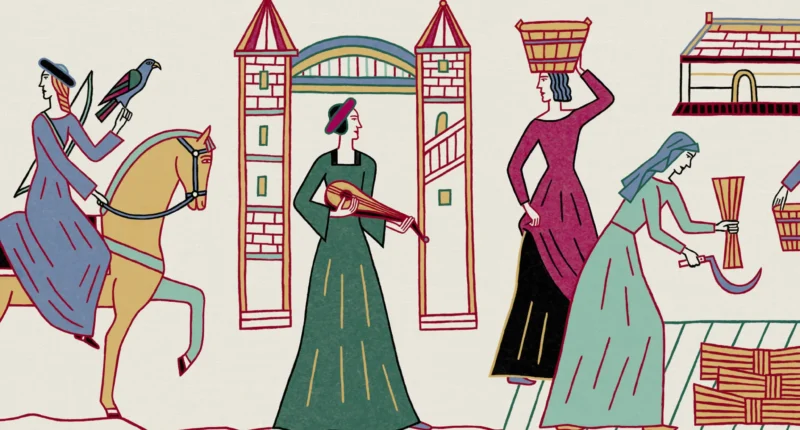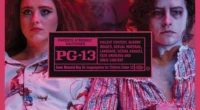Twenty-odd years ago Philippa Gregory plucked Anne Boleyn’s sister, Mary, from historical obscurity, gave her a sexy story of her own and helped set off a mania for Tudor fiction.
Since “The Other Boleyn Girl,” Gregory has rescued dozens more ladies from the confinement beds of history and placed them in England’s war rooms. Her heroines are the wives and mothers of important men, but they’re also strategists and power brokers.

“Normal Women” is an expansive, inclusive and elegantly woven nonfiction account of the lives of women in England from the Norman Conquest to the modern day. To describe it as merely a retelling is to undermine a core principle: This is a history of women in England, yes, but it is also a history of England, full stop.
“I wanted to show that murderers and brides, housewives and pirates, whores and weavers, farmers and milliners, female husbands, hermits, the chaste, the jousters, painters, nuns, queens, witches and soldiers” mattered, even if not documented, Gregory writes in her introduction. She worked on the book for a decade.
At more than 500 pages, with extensive endnotes and a 30-page index, “Normal Women” is a behemoth you may be inclined to skim, until you realize you’re actually luxuriating in every word. Some may call this “pop history” and maybe it is, but it’s the pop history of a fevered obsessive.
It moves through England’s major historical epochs — the Middle Ages, the Tudor, Stuart and civil war years (all an absolute breeze for women, of course), the Industrial Revolution — until it lands at the ordination of female priests into the Anglican Church in 1994.
At each point, Gregory touches on themes of work, sports, sexuality, slavery, prostitution and protest. She traces changing norms, and women’s elasticating rights and freedoms. Always, there is a man’s ever-present need to define female nature. (Charles Darwin declared “that while men were evolving to greater complexity and strength, women were only becoming more fertile,” writes Gregory.)
Though you might start to feel slightly bedraggled by the drudgery of it all, thankfully Gregory has a novelist’s sense for story, character and moments of levity. We meet Elizabeth Wilkinson, an early-18th-century champion boxer, who “also fought with swords, knives and quarterstaff.” Boxing was a woman’s sport back then and Wilkinson the most famous English fighter until she disappeared from history in the late 19th century, missing her chance to get silk-screened onto a tote bag.
In the 1950s, Mary Elizabeth Wilson, a.k.a. “the Merry Widow of Windy Nook,” killed two husbands with insecticide and was suspected of killing two more. When she married her fourth, he supposedly joked that they should save the wedding cake for the funeral. He died the next year.
Elizabeth Treffry defended her house against pirates in 1457 and is “credited with the technique of pouring molten lead on the raiders,” a lost art that’s sadly gone the way of tatting and the harpsichord.
These lives are extraordinary. But Gregory devotes almost 10 pages to listing the names of women who did nothing in the record books except get murdered in Britain in 2019. Almost all died by domestic violence — a phrase she takes issue with for “suggesting a sort of homemade, amateur cruelty.”
It’s tempting to write vaguely of sisterly solidarity, of women bonded through centuries of repression, but Gregory pours molten lead all over that cozy picture. “A rift opened between the women who were encouraged to be weak in the drawing room and frigid in the bedroom,” she writes, “and those who would only survive the fields, sweatshops, factories and streets if they were extraordinarily strong and resilient.”
In Gregory’s account, Englishwomen (including immigrants and those brought there by force) have often been as divided from one another — through class, race, sexuality, social status — as they have been from men: “Warm bright fires in middle-class drawing rooms burned the coal that a woman collier had dragged, harnessed like a pit pony, through the mine.”
Mary Seacole, a now-celebrated “heroine of nursing,” and a woman of color, moved from Jamaica to volunteer as a nurse during the Crimean War, but was rejected by the British government and her peers. “I had the greatest difficulty in repelling Mrs. Seacole’s advances and in preventing association between her and my nurses (absolutely out of the question!),” wrote Florence Nightingale, in a blazing display of sisterhood.
But if there’s a major theme here, it’s the “compulsive habit of men, through history, to define the ‘nature of women.’ Like a poltergeist summoned by men’s imaginations,” writes Gregory, “this creature calls women to either live up to an unrealistic ideal or rebel against it.” Even Mr. Darwin would have to agree this is a stirring insight from someone born so physically and mentally feeble — as well as increasingly fertile.






